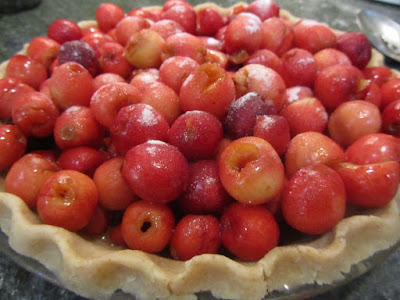Hi friends!
I often feel that my life doesn't relate much to the lives of others. I guess I feel peripheral, if that makes any sense. Despite that, today I thought I'd write a little bit about my mundane life, anyways, because there might be something in it that resonates with someone.
For the last several months, I've been using a variety of methods for getting my groceries while minimizing my risk of this virus, including Walmart's curbside pick-up service, Walmart's shipping, Target's shipping, Amazon, and more rarely, a quick in-the-store-grab-and-pay for a small basket of specific items (no more lingering or browsing the grocery stores).
This morning, I did the Walmart curbside pick-up part of August's grocery shopping. They were sold out of Great Value mayonnaise this week, so I ordered Market Pantry mayo through Target.com (as part of a larger order to get free shipping). When I place an online order for groceries, I not only open a tab on my laptop for Walmart, but also for Target and Fred Meyer. Target's mayo was 3 cents more per quart than Walmart's, but it's available to ship this week. I compare prices and decide if it's worth it to me to shop a second or even third store for specific items.
Yep, comparison shopping did not come to an end for me with this pandemic. I just acquire the groceries differently now. This month, I shopped 3 places -- target.com, Walmart online/curbside, and in-person Fred Meyer.
For a while, I was using the earliest pick-up time slot, 7 AM to 8 AM. That was often the only time slot left during a week. Fortunately for this night owl, other time slots have opened up. This morning, I opted for the 8 AM to 9 AM slot. One daughter was coming with me as she needed to swing by Hobby Lobby for an art supply. (See, we're still batching errands, too.)
What I noticed about this month's grocery order
As in July, I spent far less on food than in April, May, or June. August's total grocery spend came to $92.18. This low total reflects that we're eating from our stores of food, plus the items that I bought did not include meat or cheese (stocked up on those in previous months) but were primarily canned, fresh, and frozen fruits and vegetables, some pantry items, and several gallons of milk bought early in the month.
Walmart has the option for them to make substitution choices if my requests can't be met. I always tick this box, as the substitutions have been a pretty good deal for me. In two instances, I was subbed a significantly larger size of the foods at no extra cost to me. This order, there was 1 non-food item with a favorable substitution -- a 34-oz bottle of hand sanitizer for the price of an 8-oz one. I was not as thrilled with the other substitution on this order. I had ordered frozen cauliflower, but was subbed the broccoli-cauliflower blend. This wouldn't be an issue, except I'd planned on using the cauliflower in places where I might have used pasta. I can still pour marinara sauce over the cauli-broccoli mix, but it won't have the same visual effect. Oh well. You win some, you lose some. My disappointment is not great enough to return the substitution. I can still use this product and it did not cost me anything extra. I'll try for the cauliflower the next time I place an order.
July's order came with a couple of surprises. They were marketing gadgets, fridge magnet clips, but still very useful to me. These large clips are useful as chip-clips to hold bags closed. This month's surprise was even better -- a free sample of a fresh peach. The peach was boxed and marked as a sample, so I know this wasn't an error. Lucky me, I get a free treat! I don't know if including these surprises is a new "thing" with Walmart, but I'm happy to accept them.
So what did I buy in August?
watermelon
corn-on-the-cob
fresh carrots
onions
cabbage
bananas
milk
canned beets
canned carrots
ketchup
mustard
mayo
coffee
decaf
oyster crackers
graham crackers
box of donuts (took these to the beach with coffee as a morning treat)
frozen wild blueberries (cheaper than the non-wild ones, go figure)
frozen cauliflower and broccoli blend
frozen peas
frozen broccoli cuts (cuts are less expensive than the regular frozen broccoli)
frozen brussels sprouts
frozen apple juice concentrate
The fresh produce will supplement what we have coming in from the garden and will be consumed in the next few weeks. We'll use some of the canned and frozen produce now, but a good chunk of it is tagged for use this fall and winter.
The weather this week has been all over the map. Early in the week, we were roasting in 90+ degree heat and eating cold salads for dinners. The temps have since plummeted 20 degrees and brought rain and clouds. Last night I made baked beans, mac and cheese, carrot sticks and watermelon for dinner -- a much more fall-like meal for our household. I have homemade burgers planned for tonight, but only if it dries up around here.
That's about it for this week. I hope you all have a wonderful weekend!




















